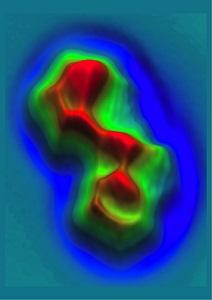Using AI to control energy for indoor agriculture
30 September 2024
Published online 1 September 2010

There are several ways to determine the chemical composition and structure of unknown compounds, such as mass spectroscopy and nuclear magnetic resonance (NMR) spectroscopy. Certain compounds are not amenable to these methods, such as those containing elements with weak magnetic resonance, or organic structures with many oxygen and nitrogen atoms within their carbon structure.
A team of researchers, including Wael Abdel-Mageed, Assiut University in Egypt, propose using atomic force microscopy (AFM) to determine the atomic structure of these tricky compounds.
AFM is a form of scanning probe microscopy, offering very high resolutions. To determine the usefulness of this technique, the researchers used it to determine the structure of cephalandole A, which was wrongly assigned when first discovered and corrected later. The structure imaged by AFM confirmed the corrected structure derived earlier, showing it may be used to determine the chemical structure of molecules by directly imaging it with atomic resolution.
Atomic resolution using AFM only reaches the outer layer of atoms in a compound and works best when imaging compounds, or substructures, that are arranged in a plane. AFM has the added advantage of directly visualizing atoms and bonds, which helps researchers figure out structures more accurately.
The team proposes using AFM, alongside other techniques, when trying to identify previously unknown organic compounds. This could be particularly useful in the pharmaceutical industry.
doi:10.1038/nmiddleeast.2010.195
Stay connected: